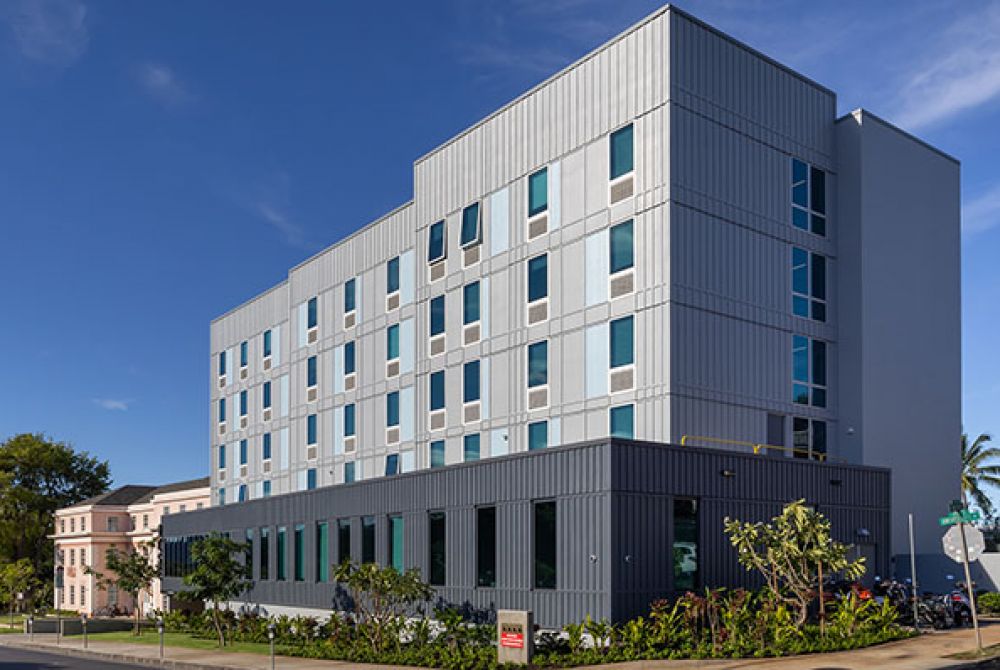Multifamily Executive: Niche Assets Climb the Rankings of 2014's Top 50 Owners
Apr 10, 2014 • 4 min read
While REITs made a big splash last year, shaking up the ranks with massive mergers and acquisitions, some niches of the industry are getting so big, you can hardly call them niches anymore.
After Hunt Cos. leaped to the second spot last year following its Capmark acquisition, the El Paso, Texas-based firm followed a similar blueprint on this year’s list. By adding more than 110,000 units through its acquisition of last year’s third-largest firm, Centerline Holding Co., Hunt leapfrogged Boston Capital to claim the top spot with a total 253,295 units. according to this year's NMHC 50 Owners list, compiled by the National Multifamily Housing Council and research firm Kingsley Associates. .
Like the Capmark deal before it, the Centerline acquisition focused on ownership interests in low-income housing tax credit deals, a business model followed by each of the top 5 firms. But niche businesses are nothing new for Hunt, which has a deep background in military housing, with a portfolio of about 40,000 units.
Hunt certainly isn’t alone in its expansive niche play. Other top 50 firms with substantial military portfolios include Lincoln Property Company and Balfour Beatty Communities, and each of those companies aggressively climbed the ranks last year. Lincoln leaped up five slots to no. 22, while Balfour Beatty Communities saw 15 percent portfolio growth, jumping nine pegs to no. 25.
Hunt has also ventured into the student housing arena, currently developing a 612-bed, on-campus cadet residence hall for Texas A&M University by 2015. And that red-hot sector continues to mature and grow, as evidenced by one notable new entrant to this year’s rankings.
Niche Factor
No student housing company has ever pierced the ranks of the NMHC 50 Owners list in its 25-year history—until now. American Campus Communities was the first student housing company to go public in 2004, with an enterprise value of $350 million; now, the company is valued at $6.5 billion.
“Student housing continues to be an industry that’s in its infancy, and, therefore, it’s ripe for growth and consolidation,” says Bill Bayless, president and CEO of the Dallas-based company.
With more than 33,000 units, the company is poised to benefit from the rise of public–private partnerships in the student housing space, as many colleges and universities move to privatize their housing. The budget constraints of many state universities is definitely a driver for the business, Bayless says, as the partnerships become a growing trend.
But the niche is operationally intense: for each ACC apartment unit, there are about three beds, which means three times as many students to serve, and leases to administer.
“Within the 33,340 units, you actually have 102,400 leases, rental checks, door keys, residents,” Bayless says. “It’s a much greater operational administration than your typical multifamily project.”
This management-heavy dynamic serves as a high barrier to entry. Yet, you could say ACC has student housing in its blood: The top executives all started off as Resident Advisors in college, and as a pure-play student housing company, its deep understanding of the niche, and critical mass of units, engenders trust.
“When a university looks at it, it’s more than the real estate,” Bayless adds. “It’s more than the sticks and bricks.”
Net Sales
The massive acquisiton of Archstone last year helped Arlington, Va.-based AvalonBay break into the top 10 ranks for the first time. Memphis, Tenn.–based Mid-America Apartment communities (MAA) also surged into the top 10 thanks to its merger with Colonial Properties Trust, putting the company at No. 9 with an approximate 66 percent increase, to more than 81,000 units.
The Archstone deal created a ripple effect further down the list. Following its acquisition of more than 20,000 Archstone units, Equity Residential put a $1.5 billion portfolio on the market. And that gave Charleston, S.C.–based Greystar Real Estate Partners a chance to add over 7,700 units, helping it to break into the NMHC 50 ranks for the first time this year. Greystar was also involved in another big portfolio deal last year, the recapitalization of a 1,640-unit portfolio in Silicon Valley, Calif.
Other big gainers included San Diego–based Fairfield Residential, which saw a 73.29 percent portfolio increase last year, to more than 36,000 units. Fairfield was also involved in a large acquisition last year, a $414 million buy of the Babcock portfolio, which added more than 5,400 units.
One of the biggest drops seen, however, was by Dallas-based Invesco Real Estate, a company that described itself as a net seller this year as it positions itself for higher-quality assets.
“We sold a very large portfolio of properties that we bought back in 2007,” says Max Swango, Invesco’s marketing director.
A large bulk of the properties sold were located in Texas, as Invesco took advantage of the high valuations seen in many hot Texas metros. The sale, to a Canadian company, provided a solid exit strategy for the company as it begins its second phase of upgrading a wide range of Class B assets. The company will now turn to conventional acquisitions, as well as providing equity to develop new property.
“I think you’ll see us continue to be a buyer of very high-quality assets in gateway, primary, and secondary markets,” Swango adds. “It’s not only buying … you’ll see us investing across the risk-return spectrum.”
-Linsey Isaacs is an assistant editor with Multifamily Executive magazine. Follow her on twitter @LinseyI to continue this conversation.
Share this post


